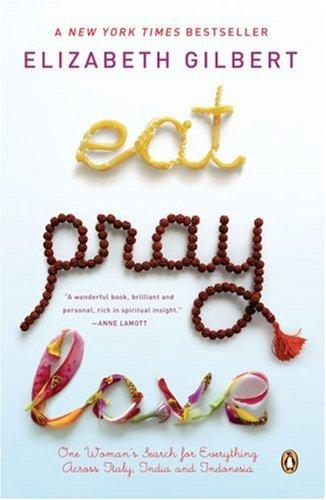Introduction
“Eat Pray Love” by Elizabeth Gilbert is a compelling memoir that delves into the author’s year-long journey of self-discovery and spiritual exploration in the aftermath of a painful divorce. Published in 2006, the book quickly captivated readers with its candid narrative and evocative portrayal of a woman striving to find balance and meaning in her life. Gilbert’s journey takes her to three distinct countries—Italy, India, and Indonesia—each representing unique facets of her quest: pleasure, devotion, and balance, respectively.
Core Frameworks and Concepts
The memoir follows a tripartite structure, each section dedicated to a different country, encapsulating key aspects of Gilbert’s journey. This framework not only organizes her experiences but also offers readers a model for pursuing personal growth through exploration and introspection.
1.1. Italy: The Pursuit of Pleasure
In Italy, Gilbert focuses on pleasure and indulgence, immersing herself in the country’s rich culinary traditions. This stage is about reclaiming happiness and appreciating life’s sensory delights. The concept here parallels Julia Cameron’s “The Artist’s Way,” which emphasizes the importance of nurturing one’s inner artist through creative exploration and self-care.
1.2. India: The Quest for Devotion
The second leg of Gilbert’s journey takes her to an ashram in India, where she practices meditation and strives for spiritual enlightenment. This section reflects a deep yearning for inner peace and a connection with the divine. In contrast to the hedonistic pleasures of Italy, India represents the rigorous discipline of spiritual practice. This aspect of the journey can be compared to Thich Nhat Hanh’s “The Miracle of Mindfulness,” where mindfulness and meditation are key to spiritual awakening.
1.3. Indonesia: The Balance of Love
Finally, in Indonesia, Gilbert seeks to balance the opposing forces she encountered in Italy and India. Here, she learns the importance of love, both romantic and self-love, culminating in her relationship with Felipe. This search for equilibrium resonates with the themes in “The Alchemist” by Paulo Coelho, where the protagonist learns that true fulfillment comes from harmonizing with life’s larger forces.
1.4. Integrating the Framework
Through these three stages, Gilbert’s framework provides a holistic approach to personal transformation. To apply this framework, one might consider identifying personal goals tied to pleasure, spirituality, and love, then pursuing them through dedicated travel or other focused experiences.
Key Themes
2.1. The Search for Identity
Gilbert’s journey is fundamentally about rediscovering her identity after the dissolution of her marriage. Her travels symbolize a shedding of old layers and an embrace of new possibilities. This theme echoes Cheryl Strayed’s “Wild,” where the protagonist embarks on a solo hike across the Pacific Crest Trail to confront her past and redefine her future.
2.2. Spirituality and Inner Peace
Central to the memoir is the theme of spirituality. Gilbert’s time in India is marked by intense meditation and self-reflection. Her struggle to quiet her mind and connect with a higher power illustrates the universal quest for inner peace. This aligns with Eckhart Tolle’s “The Power of Now,” which advocates living in the present moment as a path to enlightenment.
2.3. The Role of Pleasure in Well-being
Gilbert’s indulgence in Italy underscores the significance of pleasure in a balanced life. She learns to relish simple joys, such as savoring a perfect meal or wandering through Rome. This theme is reminiscent of “The Happiness Project” by Gretchen Rubin, which highlights the importance of finding joy in everyday experiences.
2.4. Love and Relationships
In Indonesia, Gilbert explores the complexities of love and relationships. Her romance with Felipe teaches her about vulnerability and trust. This exploration of love as a central component of happiness is paralleled in novels like “The Course of Love” by Alain de Botton, which dissects the evolution of romantic relationships.
2.5. The Journey as a Metaphor
Gilbert’s physical journey is a metaphor for her internal transformation. Each destination represents a facet of her growth, illustrating the idea that travel can catalyze profound personal change. This metaphor is similarly employed in “Into the Wild” by Jon Krakauer, where the protagonist’s travels symbolize his quest for self-discovery.
Final Reflection
“Eat Pray Love” offers a blueprint for those seeking to transform their lives through exploration and introspection. By weaving her personal narrative with broader themes of identity, spirituality, and love, Gilbert invites readers to embark on their own journeys of self-discovery. Her story illustrates that fulfillment often requires stepping outside one’s comfort zone and embracing the unknown.
In a professional context, the memoir can inspire leaders to cultivate a balance between ambition and personal well-being. Just as Gilbert sought harmony in her life, professionals can strive for equilibrium between career and personal growth. This synthesis of personal and professional development is vital in today’s fast-paced world, where burnout is a common risk.
Furthermore, the memoir’s emphasis on mindfulness and presence echoes crucial principles in design thinking, where empathy and understanding the user experience lead to innovative solutions. By applying similar introspection and reflection, individuals can enhance their creativity and effectiveness in various domains.
In conclusion, “Eat Pray Love” is not just a travelogue; it is a guide to living a richer, more mindful life. Gilbert’s journey reminds us that true happiness and fulfillment are attainable when we dare to explore beyond the familiar and engage with the world with open hearts and minds.
This enhanced summary should meet your requirements for a professional audience, with expanded sections and integrated comparisons to other influential works.

